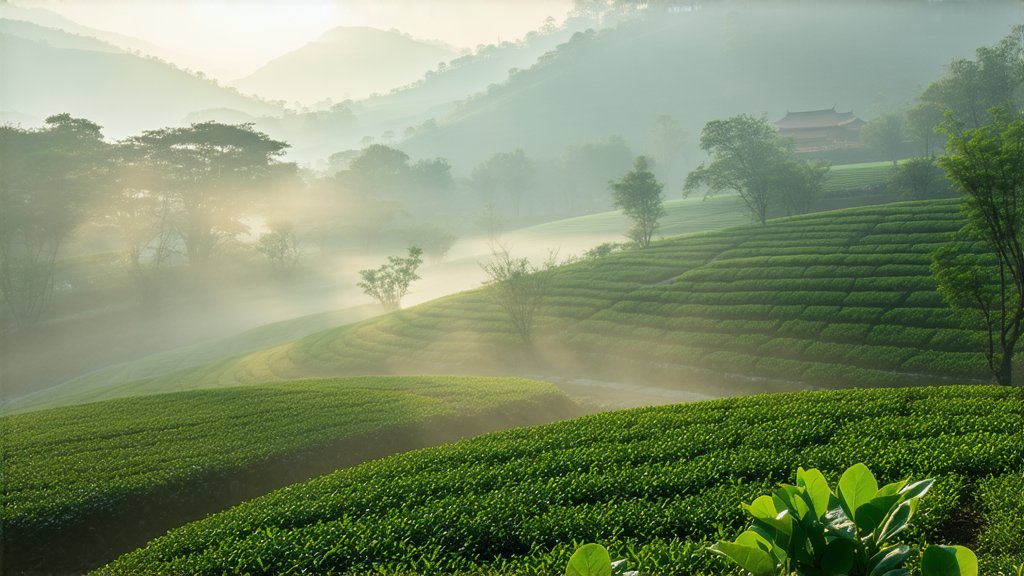
In the vast tapestry of Chinese tea culture, where green, black, white, and oolong teas weave intricate patterns, there exists a lesser-known yet equally enchanting thread – the golden hue of yellow tea (Huang Cha). Among its revered varieties stands Junshan Yinzhen, a rare and exquisite treasure that has captivated tea connoisseurs for centuries. This article embarks on a journey through the history, classification, meticulous craftsmanship, and nuanced art of appreciating Junshan Yinzhen, inviting international readers to discover the allure of this hidden gem from the heartland of Hunan province.
A Glimpse into History
Junshan Yinzhen, often referred to as the "Silver Needle" due to its slender, hair-like appearance, traces its origins back to the Tang Dynasty (618-907 AD), though its prominence flourished during the Qing Dynasty (1644-1912). Nestled in the misty mountains of Junshan Island, located in Dongting Lake, this tea was initially reserved for imperial consumption, symbolizing status and refinement. Its name, "Yinzhen," translates to "silver needle," reflecting both its visual elegance and the preciousness attributed to it throughout history.
Varieties and Classification
While Junshan Yinzhen is the most renowned representative of yellow tea, it is not alone in its category. Other notable yellow teas include Mooshan Yajian (Hairy Peak) and Houhuo Huang Ya (Houhuo Yellow Sprout), each with unique characteristics shaped by their respective terroirs and processing methods. However, Junshan Yinzhen holds a special place due to its distinct flavor profile and limited production area, which contributes to its exclusivity and allure.
The Art of Craftsmanship
The magic of Junshan Yinzhen lies not only in its natural habitat but also in the artisanal process that transforms fresh tea leaves into a work of art. The journey begins with the careful selection of tender buds and young leaves, typically harvested in early spring when they are at their peak in terms of flavor and aroma. Unlike green tea, which undergoes immediate fixation to preserve its green color, yellow tea undergoes a unique enzyme-induced fermentation process.
This process starts with a gentle steaming or pan-firing to halt enzymatic activity partially, allowing a controlled oxidation to occur. The leaves are then wrapped in cloth or paper and left to sweat under controlled humidity and temperature conditions, promoting the development of a mild, fruity aroma and a golden-yellow liquor. Afterward, the leaves are dried, often over charcoal, imparting a subtle smokiness that complements their inherent sweetness.
The Dance of Flavors: Tasting Junshan Yinzhen
To truly appreciate Junshan Yinzhen is to engage in a sensory ritual that transcends mere sipping. Begin by selecting a transparent glass gaiwan or a clear teapot to observe the transformation of the dry, pale yellow needles as they unfurl gracefully in hot water (around 80°C or 176°F), resembling a dance of golden silk threads.
The initial infusion releases a fragrant bouquet of honey, melon, and a hint of apricot, followed by a smooth, mellow taste that lingers on the palate. Subsequent infusions reveal deeper layers of complexity, with subtle floral notes and a lingering sweetness that echoes long after each sip. The liquor, a brilliant amber hue, is best savored slowly, allowing every nuance to unfold.
Conclusion: Embracing the Golden Elixir
Junshan Yinzhen embodies the essence of Chinese tea artistry—a harmonious blend of nature's bounty and human ingenuity. From its storied past as an imperial delicacy to its present-day status as a symbol of sophistication and wellness, this yellow tea continues to enchant those who seek a tea experience beyond the ordinary. As you delve into the world of Junshan Yinzhen, you embark on a voyage that celebrates tradition, innovation, and the timeless pursuit of tea perfection.
Whether you are a seasoned tea drinker or a curious newcomer, embrace the opportunity to explore this golden elixir. Let each cup be a gateway to understanding not just a beverage but a profound cultural heritage that spans millennia.